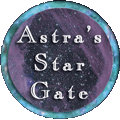
Near Earth Asteroids



WWW Tools available to observers that want to make contributions to the detection and tracking of near Earth Asteroids as well as researchers and educators.
With these tools, observers from around the world can find out what's up in the sky from their location. With strong international cooperation, newly discovered asteroids are catagorized quickly.
Click on the link to navigate to the information for each tool:
Use these tools to find out what's out there every night. The Minor Planet Center needs your observations. Through international cooperation, observers can help protect our planet from those dangerous space rocks!
NEA Toolkit
Find out what's up!
Asteroid Grand Challenge: Virtual Seminar Series
Paul Chodas NEA Discovery, orbit calculations and impact probabilitiesTools or Services for Observers
MPC's NEO Page - A summary of the NEO pages that are available at the site and links
NEO Confirmation Page - Make sure you understand all of the terms and the rules before you submit your confirmation observations.
Latest MPECs - Details on new discoveries needing follow up observations
Personalized ephemerides can be generated for many objects, including numbered minor planets and comets.
NEA Observation Planning Aid - With this tool, generate lists of NEAs that are observable from your location on any given night or series of nights.
Sky Coverage - With this tool, generate plots of the sky coverage through large surveys and other observers. Observers can submit their own coverage plots. The final plot can include various observers in any combination, dates can be adjusted as well as the size of the final graphic. Available formats are PNG and BMP in black and white or color postscript files.
Guide to Photometry - A guide to help you get started with measuring asteroid lightcurves. Learn the basic principles and techniques of photometry as you go along, but the more knowledge you acquire before you start observing, the better your results will be.
Horizons - Provides solar system data and highly accurate ephemerides for solar system objects. This includes 611,000+ asteroids, the Sun, planets and satellites, comets, spacecraft, and dynamical points such as Earth-Sun L1, L2, L4, L5, and system barycenters. Users may also define their own objects. Rise, transit and set may be precisely identified. Close-approaches by asteroids and comets to planetary bodies can be identified.
JPL Small-Body Database Search Engine - Generate custom tables of orbital and/or physical parameters for all asteroids and comets.
Orbit Dynamic Site - Use this service to visualize the orbit of your favorite objects or those of interest.
NEO Human Space Flight Accessible Targets Study (NHATS) - Find observing opportunities for asteroids suitable for human space flight missions.
The Asteroid/Comet Connection has been published online since 2002 by Columbine of Maine, that is located in Santa Fe, New Mexico, USA. Owned by Bill Allen and Sally Beach, this service brings the latest news using MPC data. An asteroid has been named Allen-Beach in recognition of this valuable service. Asteroid Allen-Beach
Operated by SpaceDyS and the University of PISA, the Near Earth Objects - Dynamic Site provides information and services for all Near Earth Asteroids. NEODyS provides current information through a search engine and will dynamically generate a web page for each Near Earth Asteroid.
This effort is transitioning to the European Space Agency (ESA) under its Space Situational Awareness (SSA) initiative. The program also include the Spaceguard Central Node and the EARN Asteroid Database.
NEO Coordination Centre - This is the home of the European Space Agency's "Space Situational Awareness NEO program.
- On Orbit Watch is a community site for the SSA program.
The Tumbling Stone is a scientific monthly publication by Spaceguard Foundation
This page was updated by Dawn Jenkins, June 27,2022.